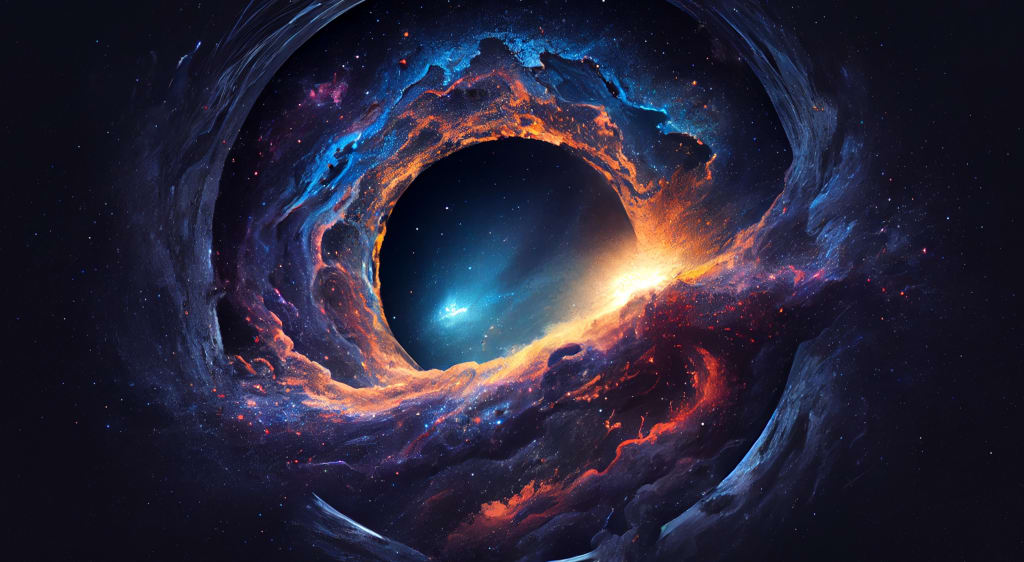Dark Horizons
Unveiling the Secrets of the Black Hole

Dark Horizons: Unveiling the Secrets of the Black Hole
Black holes have long captivated the imaginations of scientists and the public alike. These enigmatic cosmic entities possess an irresistible pull, both literally and metaphorically. Their immense gravitational force and ability to devour everything in their path have made them the subject of countless studies and fictional portrayals. In recent years, significant advancements in astronomical observations and theoretical models have brought us closer to unraveling the secrets of these dark horizons.
At the heart of a black hole lies a singularity, a point of infinite density where the laws of physics as we know them break down. Surrounding this singularity is the event horizon, the boundary beyond which nothing, not even light, can escape. It is this elusive event horizon that forms the dark silhouette we commonly associate with black holes.
For decades, black holes were purely theoretical constructs, proposed by the equations of Einstein's general theory of relativity. However, recent breakthroughs in observational astronomy have provided compelling evidence for the existence of black holes. The detection of gravitational waves in 2015, a phenomenon predicted by Einstein, provided confirmation of black hole mergers billions of light-years away.
One of the most remarkable discoveries in recent years has been the first-ever direct imaging of a black hole. In 2019, the Event Horizon Telescope (EHT) collaboration unveiled an awe-inspiring image of the supermassive black hole at the center of the galaxy M87. This groundbreaking achievement involved coordinating a global network of radio telescopes, effectively creating a virtual Earth-sized telescope capable of capturing the black hole's shadow. The image revealed a bright ring of light surrounding a dark void—a visual confirmation of the event horizon's existence.
The study of black holes has not only deepened our understanding of gravity and the fundamental laws of the universe but also raised intriguing questions about the nature of spacetime itself. According to general relativity, black holes warp spacetime to an extraordinary degree, creating a gravitational well so deep that time slows down and space becomes distorted. This phenomenon, known as gravitational time dilation, has been experimentally verified using atomic clocks. Satellites in orbit experience slightly slower time than those on Earth's surface, a consequence of the gravitational potential difference caused by the planet's mass.
Black holes are not just cosmic devourers; they also play a vital role in the evolution and dynamics of galaxies. Supermassive black holes, with masses millions or even billions of times that of our Sun, reside at the centers of galaxies. As matter falls into these colossal gravitational wells, it forms accretion disks—swirling discs of superheated gas and dust. The energy released during this process can outshine an entire galaxy, giving rise to what we call active galactic nuclei (AGN) or quasars. By studying these AGN, astronomers gain insights into the growth of galaxies over cosmic time.
While much progress has been made, black holes still hold many secrets yet to be unveiled. One of the most profound challenges in physics is the reconciliation of general relativity with quantum mechanics, the theory governing the microscopic world. Black holes serve as a testing ground for this endeavor, as they are believed to possess quantum properties and emit radiation known as Hawking radiation. Understanding the interplay between gravity and quantum mechanics within the extreme conditions of a black hole remains an active area of research.
In conclusion, the study of black holes has propelled us into uncharted territories of knowledge and expanded our cosmic horizons. From the first indirect evidence to the unprecedented direct images, we have come a long way in our quest to comprehend these cosmic enigmas. With ongoing advancements in technology and theoretical advancements, we continue to push the boundaries of our understanding, unveiling the secrets held within these dark horizons. The exploration of black holes
About the Creator
Enjoyed the story? Support the Creator.
Subscribe for free to receive all their stories in your feed. You could also pledge your support or give them a one-off tip, letting them know you appreciate their work.





Comments
There are no comments for this story
Be the first to respond and start the conversation.